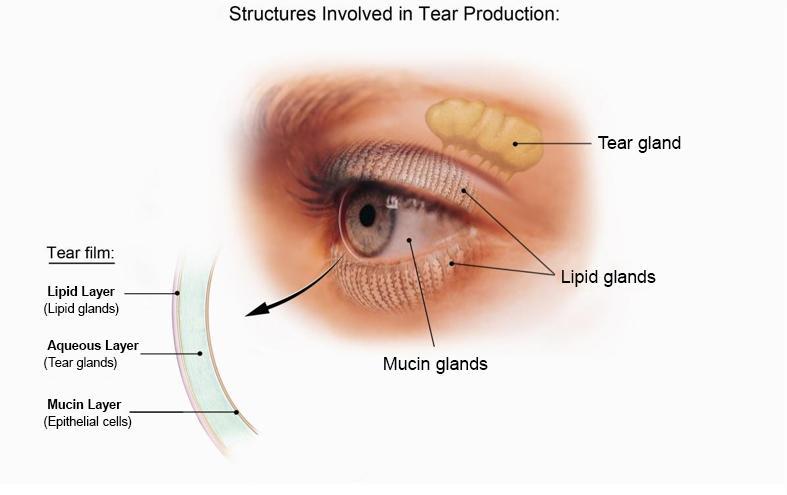Tears keep your eyes wet and smooth, and help focus light so you can see clearly. They also protect your eyes from infections and irritating things, like dirt and dust.
Every time you blink, a thin layer of tears called a “tear film” spreads across the surface of your cornea (the clear outer layer of the eye). Tears come from glands above your eyes, then drain into your tear ducts (small holes in the inner corners of your eyes) and down through your nose.
When your eyes don’t make enough tears, or your tears don’t work the right way, you can get dry eye.
What are tears made of?
Tear film has 3 different layers:
- The oily outer layer keeps tears from drying up too quickly and makes the surface of the eyes smooth.
- The watery middle layer keeps the eyes wet and nourishes the eye tissue.
- The inner mucus layer helps the tear film stick to the surface of the eyes.
